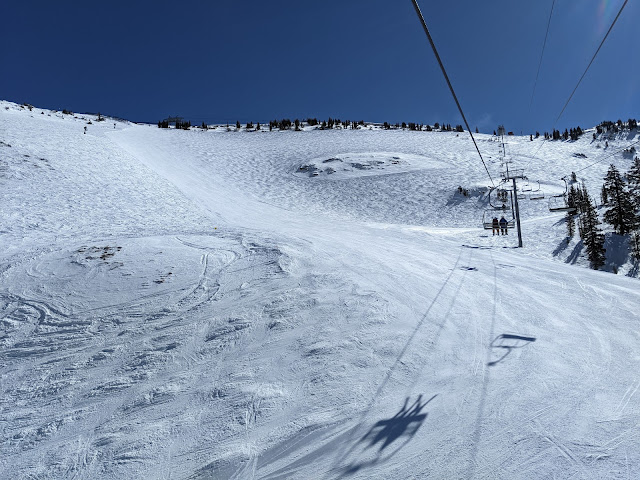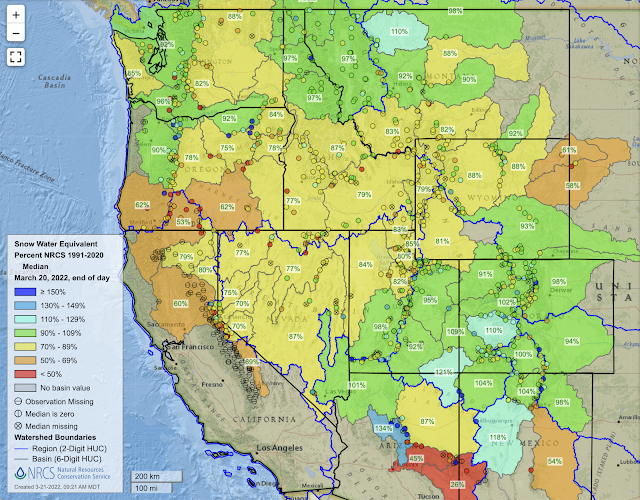We have a decent setup for snow on the way, one that will extend the Nordic season at Mountain Dell and maybe even provide a proper deep powder day at Alta.
The GFS large-scale forecast of 500-mb geopotential height (black contours), precipitable water (color contours)m and 6-hour accumulated precipitation (color fill) for 0000 UTC 9 March (5 PM MST this afternoon) is below. It's actually not a hell of a lot different than we've seen quite a bit over the past two months. There is a ridge off the Pacific coast with a trough dropping down out of Canada.
However, there are a few favorable wrinkles this time. First, there is a plume of moisture associated with a decaying atmospheric river remnant that has snuck under the ridge and is extending into the Pacific Northwest ahead of the approaching trough. Thus, the system is not as moisture starved as many of the recent troughs. Second, the pattern is shifted a bit farther upstream, so instead of sliding into Colorado, this trough will extend far enough west to give us some action (and cold air).
The GFS time-height section for Salt Lake City shows this is a 3-part storm. It begins with the prefrontal stage, which is already bringing a little light snow to the high elevations this morning and will continue to this evening. I expect accumulations during this period to be light, perhaps adding up to 1-3 inches by 5 PM this afternoon at Alta Collins.
This evening and tonight, we have a low-level frontal passage, with the front complex in structure. During this period, snowfall rates will increase. For example, from 5 PM tonight through 5 AM tomorrow morning, the GFS generates about 0.5 inches of water and 8 inches of snow at Alta Collins.
After that, we move into an unstable post-frontal period on Wednesday with the flow predominantly west-northwesterly in the current forecast. The GFS generates an additional .34" of water and 6 inches of snow at Alta Collins from 5 AM to 5 PM tomorrow. It also keeps things going overnight on Thursday.
The total tally for the GFS is 1.29" of water and 22.5" of snow for Alta Collins from this morning through Thursday morning.
Note that this will be a cold storm, with snow levels at the valley floor throughout. Monitor official forecasts for the Wasatch Front and your commutes. For the Nordic skiers, it will add to the snowpack at Mountain Dell and Round Valley and help extend the ski season at those locations. Expect less than Alta of course, but every inch at this stage helps. You can thank me later.
Getting back to Alta, the ECMWF is a bit drier than the GFS, as usual, with 0.72 inches of water. The downscaled SREF is has a pretty tight cluster around 0.7 to 1.2 inches of water and 14-22 inches of snow, although there are a few above and below those numbers. This is a tighter distribution that we saw from the previous storm.
Right now, tomorrow (Wednesday) morning looks to be on the cusp of a deep powder day with 6-12 inches at Alta-Collins by 9 AM. Total snowfall for Alta-Collins of 10-18 inches by Thursday morning.




.png)





































